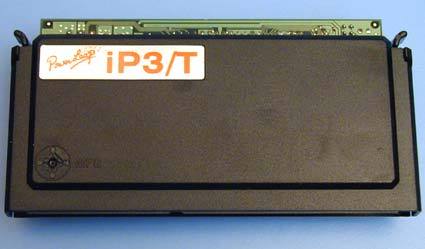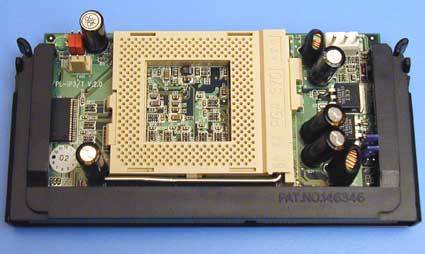The Resurrection: Pentium III 1.4 GHz on Slot-1 Motherboards
Motherboard And Processor: Requirements For Smooth Operation
To use a certain processor in a given motherboard, certain requirements have to be fulfilled. Naturally, the motherboard has to support the processor's architecture, i.e., a socket 370 board will only work with a socket 370 CPU.
Furthermore, the motherboard has to be capable of supplying the processor with the correct voltage. Lastly, the motherboard also has to work at the system speed required by the processor (for example, the Pentium III requires 133 MHz).
And finally, the motherboard's BIOS also has to be up to date to recognize the correct processor type and initialize it.
Slot-1 processors with a Tualatin core? Nope, no such thing! With adapters from PowerLeap, however, even this scenario becomes possible.
PowerLeap IP3/T: Socket 370 To Slot-1
The back of the mysterious adapter is reminiscent of the Pentium II - it, too, is dominated by a black plastic cover.
This is where the action takes place: a look at the innards of the iP3/T shows us its socket 370, clock generator, voltage regulator, jumper and power supply.
Before you begin with the installation of the iP/3T, you should download the newest BIOS available for your motherboard from the motherboard company's website and then flash it. In all likelihood, the newest revision will be well over a year old and may not support Celeron or Pentium III processors over 1 GHz. Fortunately, this is not a problem, since the adapter creates its own clock signal. The important thing is that the BIOS supports Coppermine processors.
Get Tom's Hardware's best news and in-depth reviews, straight to your inbox.
Current page: Motherboard And Processor: Requirements For Smooth Operation
Prev Page The Genesis Of The P-III Next Page PowerLeap IP3/T: What You Get
Patrick Schmid was the editor-in-chief for Tom's Hardware from 2005 to 2006. He wrote numerous articles on a wide range of hardware topics, including storage, CPUs, and system builds.


